Story by William Edgar, Photography by William Edgar and Graham Blake as noted
To begin, I was driving through the Sonoma Valley early Friday morning on April Fools’ Day—I’m not kidding—to spend the next three mornings and afternoons doing what so many of us love to do, which is to attend a vintage racing weekend at one of America’s best road course raceways. The surrounding hills were green from recent downpours, hawks were high on the wing, and vineyards were coming back to leaf once again. What really could be better? Well, maybe the sight of cars on track and the song they make, up through the gears, around the corners, flying along the straights in chase of something that defies description.
As a companion story to Dennis Gray’s event report, I picked three owner/drivers with dissimilar cars and stuck with them all through the California Sports Racing Group (CSRG) season opener, April 1-2-3, at Infineon Raceway, the 2.52-mile, 12-turn challengingly technical road course in northern California’s Sonoma County where the local Zin, Cab and Pinot wines are inspiring, and racing equally so. My idea was to see what these three gentlemen do in getting themselves and their cars ready and into another year full of vintage racing. Here’s how it went.
Oldest first, in both man and machine years, was Pete Thelander and his 1934 MG NE Magnette, brought back this year to the track sporting a fresh 1316cc engine rebuild with 58mm pop-up pistons replacing the old flat-tops to increase horsepower from its previous 55-hp to a much improved 75-hp. So this early spring race date would be a serious shakedown for Pete and his newly fitted power.
Originally MG factory-built and suited in Italian red—not traditional BRG—for Tazio Nuvolari, the car was to be in The Great One’s hands for the 1934 Ulster Tourist Trophy, but a last minute sponsorship pickle botched the deal and substitute Bill Everitt drove the 56-hp, 1086cc, 6-cylinder MG, doing quite well with the task until a rear wheel broke. With Nuvolari out, and Everitt’s DNF, the factory’s earlier hope for international glory with the car was lost.
“The car then knocked around England until after the war,” Pete told me. In 1955 it came to America and wound up with legendary NorCal MG distributor Kjell Qvale. Pete later acquired the nomadic MG NE in 1972, restored it, and gave it a permanent home. He’s now been racing and showing it for the past 20 years. Generally speaking, Pete Thelander is a happy chappy—but for my picture here he wore his race face.
We’ll come back to Pete later as the 3-day CSRG weekend mounts. Meanwhile, I hooked up with long acquaintance Carl Moore and his 1963 Lotus 23B Twin-Cam. Carl, who’s been vintage racing for 31 years, owns and drives much larger cars than his yellow Lotus, meaning big mean stuff like a Can-Am McLaren and Birdcage Maserati. Both of those cars are entered in early June’s Sonoma Historic Motorsports Festival that will also take place at Infineon Raceway. Nonetheless, Pete is sweet on his little Lotus, and it’s a very cool track tool.
“This Twin-Cam has been around northern California for 25 years” Carl said to me Friday morning at the track garage where he was prepping the car. “I did a lot of work on suspension. It was set up by someone who was probably a former Go-Kart racer, and it was called a ‘flat slider’. It would turn quickly, but break loose quickly, also. I didn’t like that at all.” So Carl made some suspension setting tweaks, calming the Lotus down a bit to behave more to his liking.
“It has 180 horsepower with plenty of get-up-and-go,” Carl said, “but it’s still running on relatively small tires—so it’s fun to drive, stops well, slides well, and doesn’t get too excited if you overcook something. It will wriggle and jiggle but for the most part it’s catchable.” This opening CSRG meet could sort out a handling hiccup he’s been having. “The front end setting is loosey-goosey on me,” Carl told me right after Friday’s first practice, “so we’ll get the people who know what they are doing to put the nose back down again and get a little bit more bite out of it.”
I asked Carl, who’s 70 this year, “With two full days ahead of you here, what are you learning today?” He smiled, then answered, “That I’m not as young as I used to be!” We both laughed, knowing that with fun comes the effort to have it, and that more age means more effort. “We’ll come back out this afternoon,” Carl said, heading off to lunch. “We’ll see if we can get the car settled down more.”
Carl was supposed to have a second car to drive here this weekend—his 1976 March 76B. “I put a piston outside the block at the last race last year,” he’d told me of the March, “so we had a whole new motor built. But then in tests it was making some ‘inappropriate noises’ and the engine builder took it down and found some things that were not right, and he’s now making it right.” As we all know, there’s a big advantage in owning more than one race car, especially with the vagaries of vintage racing.
Our third driver-and-car subject at this CSRG opener came in from Seattle, where he owns and nurtures a large stable of cars. John Goodman brought two of his hot ones here in the immense J&L Fabricating transporter out of Louie Shefchik’s race cars and restoration shop in Puyallup, Washington. John’s blue 1958 Devin SS, along with his red 1972 Sparling-Ferrari Special (Wayne Sparling had a hand in it some years ago) based on the Scuderia’s championship 312 PB cars, make a striking duo of dynamite vintage muscle.
I was bowled over back in the day at first sight of a Devin SS. Lance Reventlow had just brought out his sculpted Scarab sports car, and Carroll Shelby’s burly Cobra had not yet made the scene, so in 1958 the SS fit quite nicely between those two styling and racing icons. The car was the brainchild of Oklahoma-born Bill Devin who married an Irish-built tube chassis with a Detroit Corvette engine and California fiberglass body. They were stunners, those Devins, then and now. John Goodman digs his for it’s small block brawn and beauty of contours.
Going back into the car’s past, Bill Devin at its inception named Art Evans his sole Devin distributor and, with that in mind, I asked my old friend and fellow historian about it. “I sold all of them,” Art said of the way too-few Devins built. “This one [John Goodman’s] originally went to a doctor in Orange County in 1958, then later spent a few years in a farmer’s barn before I bought it.” Bobby Unser had driven this same car in a pro race at Tacoma in the late 1980s, and Evans raced it as well, along with its other drivers of note being Andy Porterfield, Pete Woods and Jay Chamberlain. Evans eventually sold the car to vintage racer Tom Hollfelder, from whom John bought it about three years ago.
John’s other car at the CSRG Opener was the Ferrari he’s owned for about ten years and is familiar to all in our vintage racing world as a stunning on-track attraction. The 3-liter SOHC V12 breathes through mechanical pump Lucas slide throttle injection, stops on disc brakes—regular front, inboard rear—and delivers 400 bhp and 350 lb.-ft. spun through a Hewland 5-speed gearbox to rear 15×14-inch BBS wheels shod with Goodyear slicks. The total red package weighs 2,025 pounds and carries with it period racing history at Le Mans, Daytona and Sebring.
“The Ferrari,” says 7-year Goodman Racing mechanic Mike Collins,” is probably John’s favorite car. He’ll make about a dozen races this year, all in the U.S, and he’ll run two or three cars per race weekend—sometimes four cars.”
During a barbequed ribs and killer mac-‘n’-cheese lunch with salad side provided under the transporter awning by J&L, I asked John what his “other cars” might be. Well, there’s four Corvettes, a ’64 Cobra, a 512 BBLM and a 308 Ferrari GTB, this one here, plus a Ferrari 312 Formula 1 car. I might have missed a few. I know I did.
“This is a good warm-up event for the other races coming this year,” said John, who really lights the scene wherever it may be. He’s totally energized, like his race cars. “This is a good track,” he went on, as all listened. “Good people! Good food! And now that Louie has the food down pat I just come here to eat!” And to drive, to drive.
Friday done, and a threat of rain Saturday morning dismissed as one more weatherman miscalculation, CSRG President Jon Norman, a very quick racer in his historic Alfa Romeo GTV, and CSRG’s race director Tom Franges, a former Formula 3 Cooper pilot, called the 44th season opener’s mandatory drivers’ meeting outside the track’s registration and media building. This was the first really big vintage racing event of the year in northern California and one that also featured MG cars coming in from all over the county. [Dennis Gray has more on that.]
When I sat down to chat with Franges in Registration, Tom told me, “The drivers are getting back into the groove here, and some are starting fresh, and,” he added with a laugh, “we work very hard at manipulating the weather.” Tom raced his Cooper for 13 years before the doctor told him it was time to stop, but he stayed involved in vintage racing and speaks of the CSRG philosophy.
“It’s really about the people and people talking about the cars,” Franges said. “What happens out on the track is relatively unimportant because we’re racing against ourselves for the most part. Where you finish is not going to change your career path anymore. Penske and Ganassi are not going to call.” The official CSRG Philosophy is written on its website [csrgracing.org] and it makes good sense. Basically, it’s race and have fun but don’t do it to win at all costs.
Nice job of matching duct tape to paint, with compliments to Goodman Racing’s crew. What happened was—during Saturday morning practice, John was nose-to-tail behind a Lotus, about to get around, when all of a sudden …
“It was Lotus oil,” said John, after hearing through others that it either came from the Lotus’ drain plug or that its engine let loose. “I went through the oil and my tires started going sideways and the rest is history,” John said to us at one of the J&L paddock tables. “But I almost saved it! The car’s still in great shape.” No serious damage then? “I don’t call duct tape ‘damage’,” he said with a chuckle, looking over at his cosmetically blemished Devin.
Meanwhile, Pete Thelander and Carl Moore worked their ways through their own racing groups’ Saturday practice sessions on track.
While Carl was on track in his Lotus 23B, I de-briefed Pete on what he was finding out about his MG NE, after missing a bunch of races last year because of a health issue. Pete was glad to get back into it here at Infineon, feeling fine again, even though the early April Saturday afternoon had turned summer-hot. “The car minds its P’s and Q’s and doesn’t give me much trouble,” Pete said, while cooling off in his paddock tent’s shade. I looked at his Magnette’s old drum brakes and novel pre-selective gear box and felt time slip away to the 1930s with its big bands and war clouds, the decade into which he and I were born.
I asked, “How are those brakes, Pete? They good for stopping?” He grinned and said, “You don’t brake this thing very hard. You know, because it’s so ‘aerodynamic’! Right? You get off the throttle and it almost stops!”
“Reverse aerodynamics!” I said, mocking the MG’s locomotive-like front end. Yes!” said Pete, “But it’s fun. I don’t do too many races and it doesn’t need a lot of maintenance. People appreciate seeing it,” he said, “and I bring it out for their benefit as much as for my own.”
On the other hand, in qualifying for tomorrow’s race, Pete was not that pleased. His lap-time transponder hadn’t worked, and he would have to start—who knows where?
Some thirty years after Pete’s tall, blunt-nosed NE was in its prime, along came Carl’s sleek track-hugging Lotus. Colin Chapman’s race cars in those early 1960s were making huge strides in design and performance, and the 23B with strengthened chassis and Lotus-Ford 1594cc 4-cylinder twin-cam was a racing star.
With a prototype “B” engine fitted in Jimmy Clark’s Lotus 23 at the Nürburgring 1000km in 1962, the result, if too brief, was sensational, as Clark led the bigger Ferraris, Aston-Martins and Porsches in a show of superior development. That reputation has survived to live on in Carl’s yellow #29. He qualified second here behind younger pole-sitter Harindra de Silva’s more powerful, particularly torquey Nerus BMW/M10-powered Elva #196.
As seemingly good as it was going for Pete and Carl, a few problems were surfacing in John’s Goodman Racing Devin and Ferrari entries.
First, John’s Devin was having issues. The oil catch tank was proving to be not large enough, and engine oil was being picked up in blow-by. A larger tank easily solved that one. But the threat of another woe lingered. Oil pressure was not holding as it should for ideal engine performance. As with so many disquieting situations in racing, particularly with these older cars, this was coming down to one of “let’s try it and see”.
While Mike Collins ministered the Devin’s throttle, Goodman crew chief Walter Gerber watched over the engine bay until all the loose oil on the 500-hp 327 Chevy toasted away and the motor smoked no more. The Devin SS was deemed good to go for John in Sunday afternoon’s “Group C” race, a category in CSRG terminology “representative of the larger engine displacement sports and GT cars as raced in the U.S. under the racing rules of 1967 and earlier.” With Corvette power alive beneath his Devin’s hood, the competition for John to beat would be frequent winner Terry Gough’s 1965 Corvette roadster # 75. I’ve ridden Infineon’s road course as passenger with Gough to witness the meaning of g-force and what that bad white Vette of his does.
Looking again at the red V12, the first indication of trouble with John’s Ferrari was back a while, during Friday’s afternoon practice. Somewhere, for some reason, a problem made itself known in the car’s water plumbing.
Returned to the paddock, Mike Collins found that a stuck water valve had prompted the leak. The Ferrari’s cooling system had been recently augmented with a water heater device more commonly seen in F1 cars that allowed hot water to run through the engine on start-up. But when the valve failed, no water passed, causing a boil-over while still on the race grid. In little time the malfunctioning gizmo was removed, and the car was ready again for a later Friday afternoon practice where the Ferrari ran fine again for John.
As Collins later explained, cold starts can be damaging to these older aluminum block engines and the “hot box” water trick was feasibly a way to go. In this case, however, it wasn’t.
John, following a good track session with his Ferrari on Friday afternoon, did well enough in Saturday’s qualifying run. He was set to start mid-pack for Sunday’s “Group F” race “representative of the earlier ‘Wings and Slicks’ sports racers and Open Wheel cars raced in the U.S.” With slicks, stick, and horses, it was bound to be wild. But before that, we turn to MG NE Magnette power again, and Pete Thelander.
“I’ve finally after fifteen years got an engine that’s up to NE spec,” Pete told me, “and I’ve now got all the seventy-five horses that I should have. I’ve been running short for all these years! I actually got hold of an original NE block that says ‘NE’ on it. The first engine I rebuilt for when I restored it lost oil pressure, then I put back in the little short-stroke ‘K’ engine and maybe I was getting fifty horses out of it. Sometimes I had to go down to second gear to get up the hill here to Turn 2. But that’s no more. I get up it in fourth gear, then downshift to make the corner. It’s almost like learning to drive the car all over again.”
After Pete’s Sunday races, not one but two, in his MG—he drove Group A and, an hour and a half later, again competed in the big-field all-MG go at the end of the day—he was bone-tired, but stoked. “That was a workout!” he said, toweling his face. “We had good runs and pretty well stayed out of the leaders’ ways. My car is incredibly quicker than it used to be. I’m still amazed by it.” So—Pete Thelander arrived, tested and tried what he brought, and learned what he has to work with for the rest of the season.
Carl Moore and his Lotus 23B were ready for Sunday’s “Group D” race, “representative of the sports racing and open wheel cars as raced in the U.S. in the 1960s and early 1970s.” His suspension was the way he wanted it, and the car was behaving like a really top-form Lotus should.
Carl went to the race grid’s second spot with his Lotus facing a lot of competition to overcome on track. In particular, he was sandwiched on the grid between pole-sitter Harin de Silva in the closed wheel Elva-BMW and third qualifier, another younger guy, Danny Baker in an equally quick open-wheel Lotus 27 Junior.
“We had a good day yesterday,” Carl told me an hour before his Sunday race, “and we did some suspension tuning, which helps a lot. We got the car settled down. In practice this morning everything was working good, but we have a little bit of a grumpy third to fourth shift, a grumpy gear. You don’t like them, because it makes you think about the grumpy gear when you are making that shift—which you shouldn’t have to do. You want to pay attention. And you have to slow it down just a little bit for that third to fourth shift. It’s not a big deal, but you don’t want to have to be thinking about it when you’re going this fast.”
I asked Carl about the other guys up front for the start—Baker and de Silva. “We are within a hundredth of a second of Danny, and he’s a very good driver. And Harin drives the Elva well. He’s young and fast and brave, and there’s a few places that I can still catch up to him, and I’m not telling him where. That Elva’s a fast car with a lot of juice. He has 50 or 60 more horsepower than I do. Michael Malone drives his Elva well, too. He’s predictable and safe and fun. But the young kids, like Harin and Danny—darn them anyway. Us older guys feel like the seniors tour in golf. The young kids coming along are quick and talented. This is good sorting out time now for the coming races.”
And the track, in Carl’s estimate? “This is one of the toughest tracks to drive,” he said. “My car is stored here, and we do testing here. It’s technical to drive. I raced back in the ‘60s with a Lotus Seven for a while, but, when I quite, this track was just starting to be built. This is a great track, and I take advantage of the home course knowledge, so they say.”
Carl took second place to winner Harin de Silva. Understandably, our Lotus 23B driver was a bit upset with his finish, thinking earlier that he could pull off a win over the Elva, even with de Silva’s Nerus BMW power being more than his own less-strong Lotus-Ford. But Carl will be back, and there will more times in 2011 when he and Harin will face off in these same feisty race cars from the ‘60s.
Once again in a list of many meets over the past decade, John took his red car to the race grid, ready for the go this time with CSRG’s “Group F” that includes Brabham, Lola, Chevron, March, Leda and his own Ferrari, a mix of machines with engine displacement ranging from 1600cc to 5000cc. It had all the earmarks of a main event.
John did well with his Ferrari’s mid-pack finish in Sunday race that led to the afternoon break in the CSRG’s seven race groups. Then, just a little over an hour later, it was time for John’s second and last race of the day—taking the Devin to do battle in the “Group C” bunch that included Terry Gough’s pre-race favorite Corvette.
John’s Devin SS, as far as Mike Collins and Walter Gerber could speculate, was going to be OK for the Sunday “Group C” race. The SS’s oil issue had been addressed, the engine was sound and strong, and on went new Avon rubber fitted to the car’s Minilite aluminum wheels, a departure from the Devin’s original spokes and switch some purist find inappropriate.
The Devin’s oil specter did not go away, but came back to haunt John during that Sunday race’s early laps. Oil pressure weakened, dropped, and John pulled in and parked the car. I caught up with him and his wife, Shawn, as they were saying good-bye to the crew and already set to head north for hometown Seattle.
“What happened with the Devin for you to bring it in early?” I asked. “Something is wrong in the pan,” John said, “and I was just losing too much oil pressure. The larger catch tank worked for the earlier problem, but for some reason now I’m losing pressure. It was just too hard to manage that and also manage the race. So, I would rather save the Devin’s motor for another day.” And the Ferrari? “The Ferrari was awesome,” said John. “It felt good! We’ll see you at Wine Country!”
Of course, he meant the Sonoma Historic Motorsports Festival on June 4-5 this year, where there will be 400 entries compared to the 200 this CSRG Opener had. It’ll be almost summer again and many here this weekend, and many more who weren’t, will return to vintage racing at Sears Point—err, Infineon Raceway. It’s hard to break old habits when it comes to the names of tracks and events. But they continue to be and to grow and to provide fun and entertainment for all.
To echo Tom Franges and maybe make of it a mantra: “It’s really about the people and people talking about the cars.”
I’ve been going to sports car races since 1951, and must say I had a grand time at Infineon with this “three to get ready” trio—Pete Thelander, Carl Moore, John Goodman—and thank them and all the others who helped make CSRG’s 2011 Season Opener another winner of a vintage racing weekend.
Oh, one more thing. I have a footnote to Carl Moore’s “podium” second in that he was one of two top-3 Lotus finishers within the same racing week. The other was in distant Malaysia where Nick Hiedfeld took his F1 Lotus Renault GP to third spot at Sepang International Circuit. I venture to declare that this double Lotus pop was enough to put a smile on Colin Chapman’s face—wherever he might be.
[Source: William Edgar; photo credits: William Edgar and Graham Blake]
CSRG Infineon Season Opener 2011 – Three to Get Ready
8 Comments
Leave a Reply Cancel reply
You must be logged in to post a comment.


















































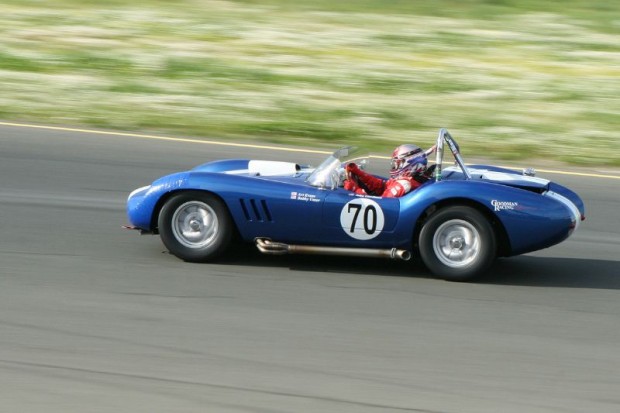






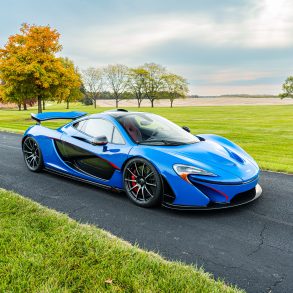
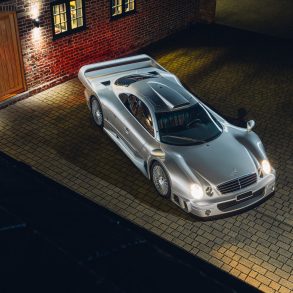
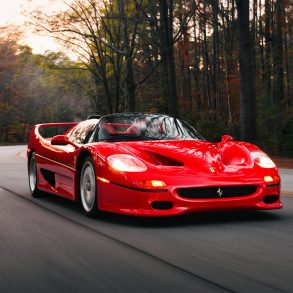
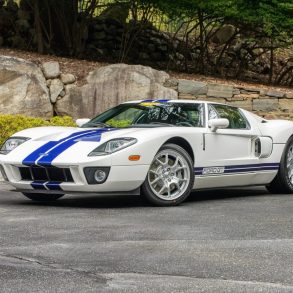


The rich are different from us.
They have more cars.
Nicer ones, too.
Wealthy or not, I personally thank the owners of such cars for sharing them with us. Where else are we able to literally touch the best of the best of anything other than at the vintage car events?
Try touching your favorite painting at the local museum…and I could go on.
Great piece Mr Edgar. Real enjoyable to get in the cockpit with these three owners.
Really nice article Mr. Edgar. It’s always great to get a behind the scenes look at these great people and the wonderful cars they pull out to “exercise” every so often.
Great article and photographs. The Lotus and Devin were great and the MG just jumped off the screen. Well done that I will surely keep. Thank you.
I love the stories, I have a Devin SS in my shop and the interior shot of the SS shows some side protection bars in the door. I would like to do that! Can you send along that photo for me to show my client? Safety is good even if not period, we know more now.
Thank You in advance,
Don Breslauer
Excellent article, great to see that Will Edgar is writing for SCD.
The style of Mr. Edgars’s race report is the best I’ve read in the vintage race genre. When reading it I felt I was part of each of the three teams, sharing the problems and anticpating the results. I was riveted! Much better than most race reports where only a few of the more interesting cars are described and the race results are pretty meaningless.